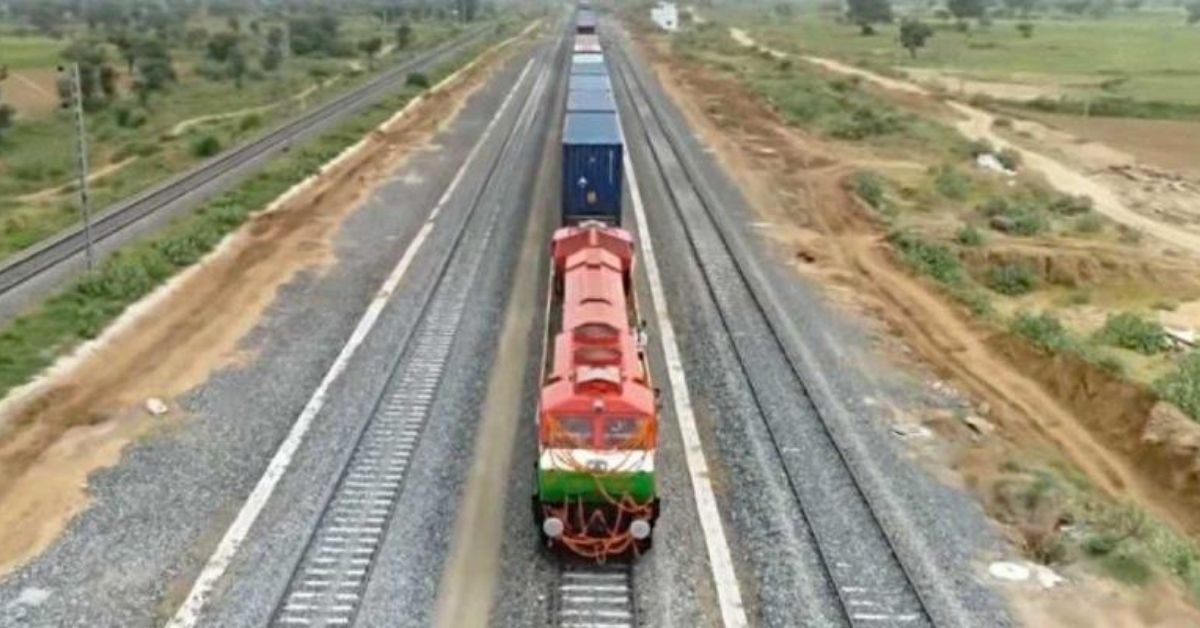India’s big-ticket rail infrastructure project, the dedicated freight corridor (DFC), is nearing completion. The ₹1.25-lakh-crore twin-corridor initiative, aimed at overhauling the country’s freight movement, is expected to be fully commissioned by December. The last stretch of the western DFC, about 110 km, is in the final stages of development. This stretch has missed multiple deadlines given the seasonal nature of the construction work, among other delays.
The eastern DFC — largely coal-linked and running from Ludhiana (Punjab) to Son Nagar (Bihar) — is already operational. The western DFC mostly carries container and cement cargo. The DFC creates 3,300 km of electrified, double-line tracks — 1,875 km eastern DFC and 1,506 km western DFC — reinforcing the freight backbone between Punjab and Bihar (to be later extended to West Bengal), and between Haryana and Maharashtra.
The corridors decongest existing passenger routes, reduce logistics costs, and cut carbon emissions. The system is built to handle speeds up to 100 kmph — double the average speed of Indian Railways’ freight trains today. Currently, trains are averaging 50 kmph on the operational DFC segments, and this is expected to improve as the rolling stock is modernised. DFCCIL is already clocking 85 per cent capacity utilisation across both corridors. The full-scale commissioning is expected to push usage to 96–99 per cent by mid-2026, with the corridors jointly handling 480 trains daily (240 in each direction).
The detailed project reports (DPRs) for three new corridors — East Coast, East–West, and North–South — have already been submitted to the Ministry of Railways. The estimated cost is ₹4 lakh crore. If cleared, the East Coast corridor (Paradip to Vijayawada) will take priority, followed by East–West (Kharagpur to Mumbai), and then North–South (Delhi to Chennai).
With most of the funding currently sourced from the World Bank and other multilateral agencies, DFCCIL is now considering refinancing a portion of its existing debt — particularly the World Bank component — through the Indian Railway Finance Corporation (IRFC).
With the Railways opening up corridor maintenance to public sector and private players, DFCCIL may explore the prospect of bidding for upcoming maintenance and infrastructure projects. It also plans to extend services like parcel express trains, especially to underserved routes like Palanpur, and invest in rolling stock capable of higher speeds.
The Railways also recently signed an MoU with DFCCIL for the installation of a machine vision-based inspection system (MVIS), to automate the monitoring of rolling stock health. DFCCIL will procure, supply, install, test, and commission four MVIS units. The technology is expected to significantly enhance the safety of train operations and reduce manual inspections.
Through MVIS, AI/ML-based solutions will be deployed along tracks to capture high-resolution images of the under-gear of moving trains. The system will automatically detect loose or missing components and generate real-time alerts. The strategic intent is to shift freight from road to rail, building multimodal logistics hubs and tapping private sector participation.
The upcoming multimodal logistics park at Sanand, near Sanjali, in Gujarat, is expected to be commissioned by the end of July. Under the Gati Shakti National Master Plan, DFCCIL is developing 150 cargo terminals, offering private logistics players letters of award (LOAs) to invest and connect directly with the corridor network.









